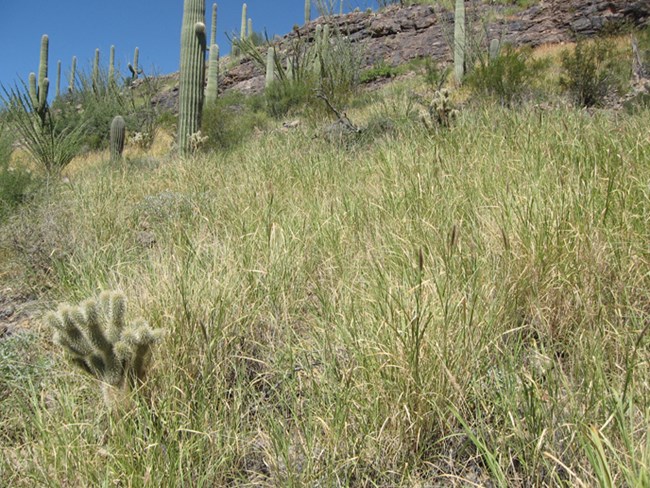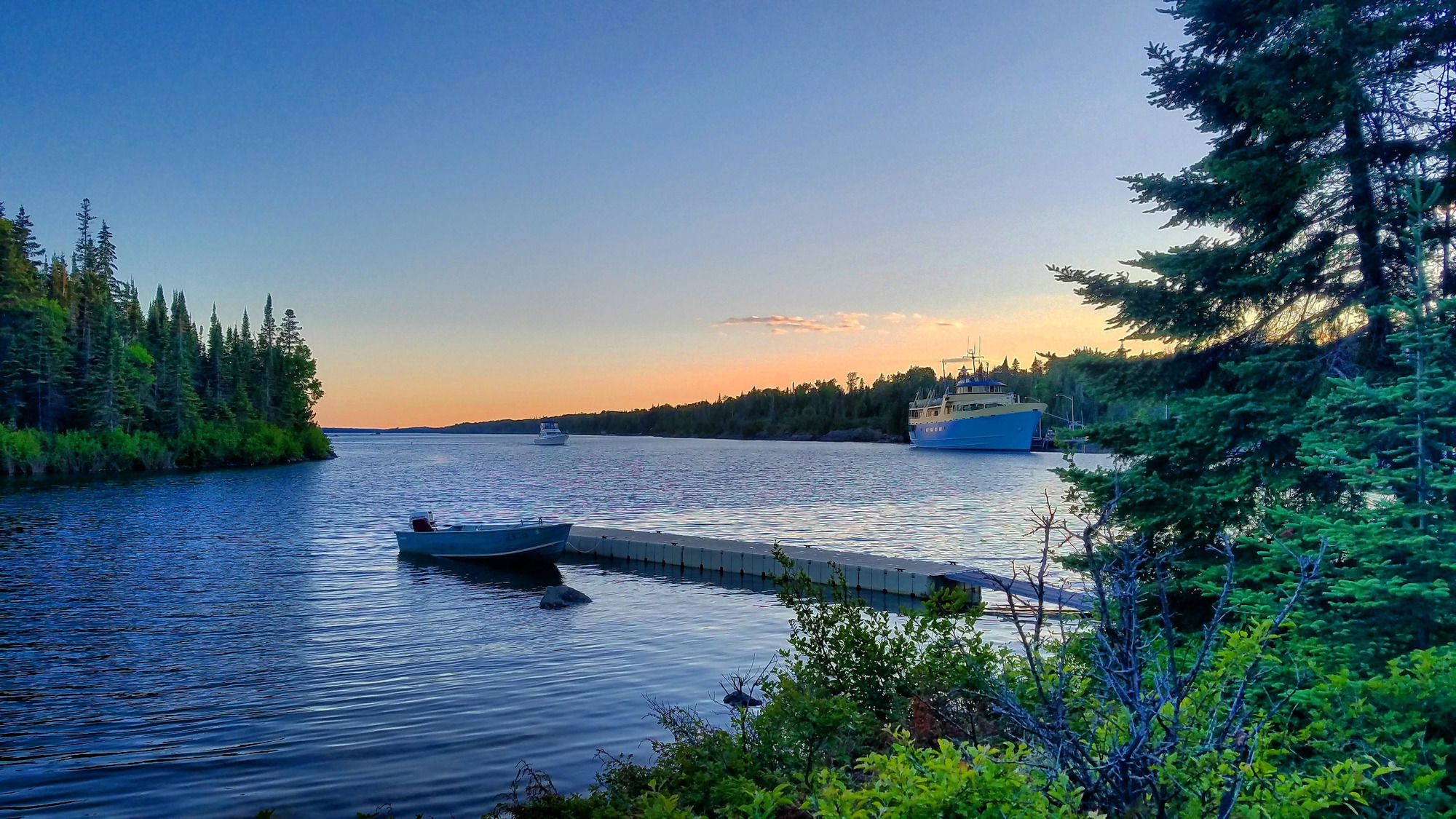Aug 7 – Written By Michael Sparks
The National Parks’ Secret Weapon? Volunteers
Volunteers are critical to the NPS’ mission of conservation and education.
This summer, millions of Americans will travel to national parks, seeking open spaces and beautiful views after having been cooped up for most of 2020 due to coronavirus restrictions. Those millions of visitors will put a lot of strain on the park system. The National Park Service has over 10,000 employees to help manage the crowds, make sure the animals are safe, and protect the land. But some of the most important people involved? Surprisingly, volunteers.
In the middle of the Sonoran Desert in southwestern Arizona, Saguaro National Park is one of the best examples of volunteer-led conservation in the national park system. Standing up to 50 feet tall with their arms stretched to the sky, saguaros are a southwestern icon and the quintessential cactus. They can live for more than 150 years but are slow growing early in life, taking 10 years to reach just four inches in height. It is critical to the park’s long-term plans, then, for scientists to have an accurate sense of its cacti population, says Don Swann, a biologist for the park.

To do that, the park recruits hundreds of volunteers to help count its cacti as part of the decennial Saguaro Census. The tiny size of the youngest cacti means that drones and other technology can’t get the job done, so the work must be done the old-fashioned way. “We’d make it into a game so we didn’t miss any: who can find the smallest one?” Hannah Bohn, a volunteer with the Arizona Conservation Corps who worked on the Saguaro Census said. “We couldn’t do it without” the volunteers, Swann, who has worked with thousands of volunteers since he started at the park in 1993, told me.
The volunteers tend to agree. Olivia Carey, a retired systems engineer from Tucson, said of her volunteer group’s work on the census, “We were a contribution to that ongoing long-term project of the health of the Saguaros.”
For Swann and the park, though, it’s not just about getting one-time help. It’s about creating a stable community around the park. “It’s an opportunity for people to engage with the desert and Saguaros in a very intimate way…If people have more of an understanding of the resources we protect, they’re more likely to help us protect them.”
And there’s a lot for volunteers to help protect. Counting cacti isn’t enough. One of the most pernicious threats to the desert ecosystem is the invasive plant buffelgrass, which is a main accelerant of wildfires in the Sonoran Desert.
As often happens with invasive species, buffelgrass outcompetes native plants and is here to stay. “There’s more than we can treat,” said Saguaro National Park restoration ecologist Perry Grissom, and now it’s all about management. “Local eradication is possible in some areas,” Grissom told me. Because buffelgrass grows exponentially, removing even a small amount equates to a significant reduction in wildfire risk. But because of the labor-intensive nature of the work, without the help of volunteers, Grissom said, “our prospects for long-term success are much lower.”

Typically, volunteers use hand tools to dig up buffelgrass by the roots. Pulling buffelgrass by hand in the heat of the desert mountains is hard work. “It takes a special person” to be willing to do that work, Grissom told me. “But we’re next to a city of one million” and are able to leverage that to recruit volunteers. The most experienced volunteers can even “adopt a piece of the park and go out there and patrol it” on a regular basis, pulling up any buffelgrass they find. “That’s a huge bang for the buck.”
Helping to prevent wildfires is obviously a huge benefit, but protecting the desert isn’t the only critical work that volunteers do within the natural parks. Across the country, volunteers help to maintain park infrastructure and assist in “citizen science” conservation projects.
At Isle Royale National Park, north of Michigan’s Upper Peninsula in Lake Superior, volunteers help with everything from lighthouse restoration to trail maintenance to loon nest monitoring. “The best way to get a lot of trail work done in a short amount of time is to work with” volunteers, says Liz Valencia, a manager in the Cultural Resources and Interpretation Division at Isle Royale. Other volunteers work off-trail. Every summer, two long-time volunteers get in their kayaks and paddle around the island, tracking loon nesting patterns so that Isle Royale can monitor the health of the loon population, Valencia added.
Location impacts the type of volunteer program a park can offer more than almost any other aspect. Isle Royale is the most remote and least visited park in the lower 48. Visitors must take either a seaplane or several hour ferry ride to get to the park. “The logistics make it hard. But the upside is that the people can stay for weeks,” says Valencia, who herself started her career as a park intern more than 20 years ago. As a result, Isle Royale gets 14,000 to 20,000 volunteer hours a year, according to Valencia.

In contrast, at Saguaro, whose two sections straddle metro-area Tucson, volunteers gave over 35,000 hours in 2019, according to Swann, the biologist who leads the Saguaro Census. At Cuyahoga Valley National Park, a well-developed and easily accessible park midway between Akron and Cleveland, volunteers gave almost 180,000 hours in 2019, according to Kevin Gross, the director of volunteer and community engagement at the Conservancy for Cuyahoga Valley National Park, the park’s official philanthropic partner.
Because Cuyahoga Valley is located near two major metropolitan areas, the park receives volunteers from schools, businesses, scout troops, and other groups. Cuyahoga Valley park ranger and youth volunteer coordinator Josh Bates says, “Proximity pays off for us big time.”
The volunteers, of course, get something out of it, too. “The satisfaction, the joy of contributing…and an opportunity to connect with our little corner of the Sonoran Desert,” motivated Carey, from Tucson, to help with the Saguaro Census. "These are the people that are so passionate about a place that they wanted to get off the bench," Cuyahoga’s Bates told me. And that feeling of admiration goes a long way: "It's great for us and great for the volunteers...a win-win," Valencia, from Isle Royale, told me.
As valuable as volunteers can be for the park system, they come with one fatal flaw: they're human.
Because buffelgrass, for instance, tends to look similar to other grasses that actually are native to the Sonoran Desert, park rangers or more experienced volunteers usually partner with less experienced volunteers and teach them how to make sure they're being safe and identifying species correctly. "We send them out with a fair amount of supervision," says Grissom.
At Cuyahoga, “we try to make it pretty dummy proof” and send volunteers to an area where, if they are doing invasive species removal, the only plant in the area is the one to remove, Bates said.
At the end of the day, though, volunteers are some of the most important and most powerful allies to the National Park Service’s conservation mission. As millions of Americans gear up to visit national parks this year, volunteers will be a big reason the parks remain so popular. Says Kevin Gross, “We wouldn't be the park we are today without volunteers.”